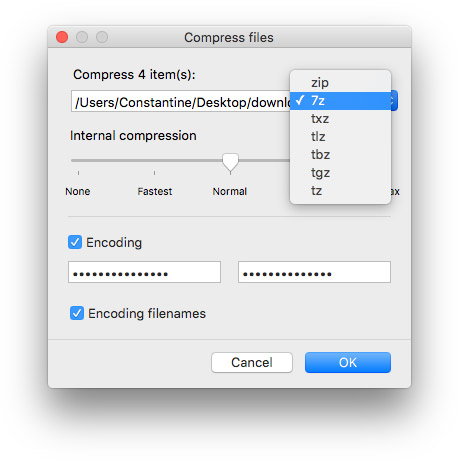Disabled-The terminal server automatically maps the client default printer and sets it as the default printer upon connection. Not Configured-The default printer is not specified at the Group Policy level. However, an administrator can configure the default printer for client sessions by using the Terminal Services Configuration tool. Silverlight: Silverlight for Mac is available here, but as explained in this StackExchange answer, Microsoft Silverlight for Mac is 32-bit only, even though the Windows version has 64-bit and 32-bit versions. This is a problem because no major browser for MacOS has a 32-bit version, and MacOS Catalina drops support for 32-bit programs entirely. 7-ZIP command line tool version, 7z.exe, allows you to execute commands using the system terminal. 7-Zip is a powerful, open-source, and user-friendly program that offers support for most file archives like 7z, ZIP, RAR, TAR, and GZIp, among others. These characteristics make 7-Zip easy to download and be used for personal or commercial purposes. Create a password-protected ZIP file in OS X. To create a password-protected Zip file in OS X, you can use the Terminal and you don’t need to download any other programs. First, place all of the files that you want to compress into a single folder, and then rename that folder to the name that you want your ZIP file to have. Open the Terminal.

(Minimum Version: 1.8.6.0) TSPrint is mostly used with two types of TSPrint printers: TSPrint Default and TSPrint Printer. The TSPrint Default printer will print everything to the local default printer without any dialogs. The TSPrint Printer in return will show each time a dialog where you can select the desired printer and its settings.
Now sometimes you would like to create a new printer and tell TSPrint to automatically transfer the print job to another local printer besides the default printer.
This can be done with the new type of TSPrint printer named TSPrint User Defined. By default, the TSPrint installation does not create such a printer.
To map a local printer to a TSPrint printer log-in to your terminal server and go to:
Start -> Programs -> TerminalWorks -> TSPrint Server -> Print Manager
This is the Printer Manager of TSPrint which enables you to create new TSPrint printers and assign them to different users or groups.
Now to create a new user-defined printer that we can map to a local printer we press the green plus button on the lower-left corner of the dialog. This will show us the following dialog:
Zip With Password Mac Terminal
The new printer dialog enables to define the name and functionality of the TSPrint printer.
Enter the desired name of the printer and under TSPrint Function, select TSPrint User Defined. Now under the Printer Security field, you can add different users or groups which should be able to see and print to this printer. If you leave this field empty, then only YOU and the server Administrator will see this printer and be able to print to it.
After we save the new printer, it should appear as any other printer in our list:
Now the first time you print to this printer, a dialog will show up, which will ask you to select the desired local printer. If another user on the terminal server prints to the same printer, he will also receive this dialog the first time, and he will able to select his local printer. By printing on the terminal server to the user-defined TSPrint printer, TSPrint will check if the user has selected a local printer to which print jobs should be transferred. In case he has not, the earlier mentioned dialog will show up.
Zip With Password Mac Terminal Linux

Here you select the desired local printer to which the server printer should be mapped to.


Crack Zip Password Mac Terminal
Now print to the printer, and your print job will automatically be transferred to the earlier selected local printer. Using this scheme, you can, for example, create a new printer and assign to him form sizes of your local POS printer, and each time, when printing on the terminal server, the print job with the correct form size will be printed on your local POS printer.
